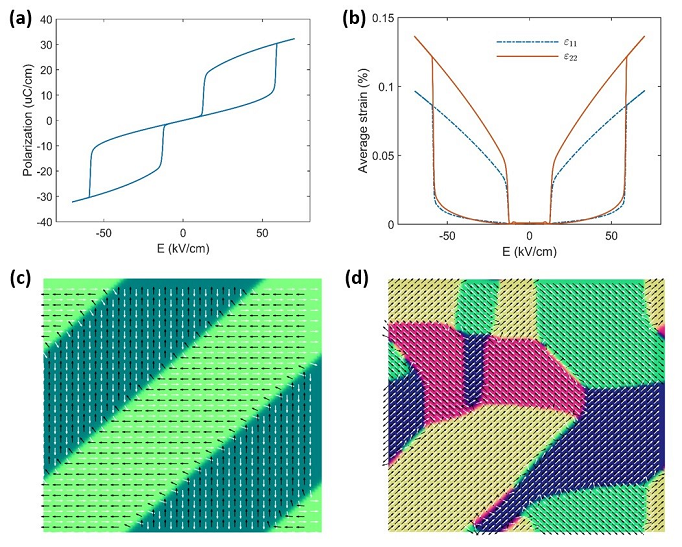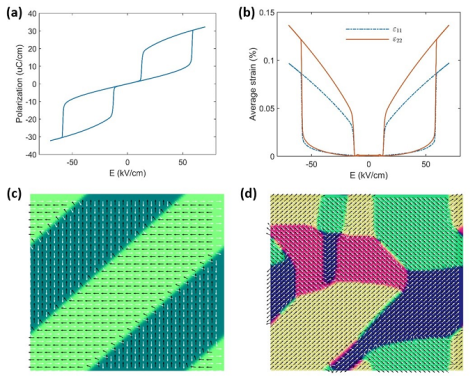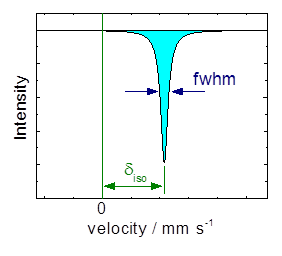Mesoscopic Simulation, Mechanics of Functional Materials Division
Head: Prof. Dr. Bai-Xiang Xu
We use the Landau phenomenological theory and phase field simulation to investigate the formation of antiferroelectric micro-domain structure and antiferroelectric phase transition. We address also the influence of defects, doping and electrical/mechanical stimuli on the domain size, domain morphology, and phase transformation of antiferroelectric materials. Understanding the mechanism of domain formation from theoretical calculation is meaningful in guiding experiments to optimize the desired properties of antiferroelectric materials.


Field Dependence, Catalysts and Electrocatalysts Division
Head: Prof. Dr. Ulrike Kramm

We are mainly focusing on the influence of Mössbauer active dopants on the electrical properties of Antiferroelectric materials (AFEs). For instance, for the PLZST-system (Pb,La)(Zr,Sn,Ti)O3 it is known that based on the integration of different amounts of tin, the electric behavior is also changing. The basic question is if there is also an electronic effect caused by the integration of tin, or if tin works only as structural promotor. The electronic effect in terms of electron density can be studied by isomer shift while the ordering of tin in PLZST is expressed by the full width at half maximum.
The results from Mössbauer spectroscopy are further correlated with the results obtained by Nuclear Magnetic Resonance spectroscopy of the same samples.




